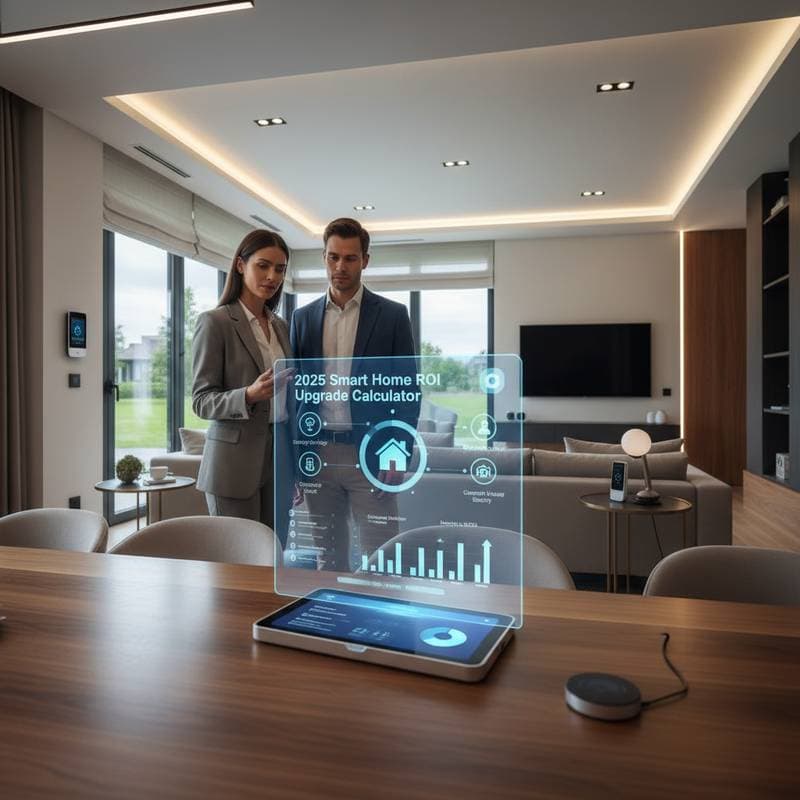Maximize Returns on Smart Home Investments: The Upgrade Calculator Guide
Homeowners often consider smart upgrades to enhance daily life, but the key challenge lies in selecting options that provide clear financial benefits. Without strategic planning, these investments risk becoming costly additions rather than value-adding assets. The Smart Home ROI Upgrade Calculator serves as a practical tool to evaluate potential returns, including energy reductions and property appreciation, ensuring that devices function cohesively as an integrated network.
Defining Smart Home ROI
Smart home ROI encompasses the relationship among initial expenses, ongoing savings, and enhanced usability. This metric accounts for lower utility expenses, elevated home market value, and streamlined automation features. A thoughtfully designed setup can reduce yearly energy costs by 10 to 25 percent, varying by location and usage patterns. Beyond finances, such systems improve security and comfort, contributing to a more desirable and efficient residence.
Step One: Assess Key Areas of Impact
Divide your home into targeted zones to pinpoint high-impact upgrades. This approach allows for focused investments that align with specific goals.
-
Energy Management Area
Smart thermostats, automated lighting systems, and power-monitoring outlets fall into this category. For an average household, these installations range from 200 to 800 dollars and often recover costs within two to four years via decreased power consumption. Track usage patterns to select devices that address peak energy demands, such as programmable schedules for heating and cooling. -
Security and Protection Area
Options like intelligent locks, surveillance cameras, and motion detectors cost between 100 and 1,000 dollars, based on advanced features and setup requirements. Returns manifest through heightened reassurance and potential insurance reductions of 5 to 10 percent on premiums. Integrate these with alert notifications to enable rapid responses to potential issues. -
Lifestyle Enhancement Area
Devices such as voice-activated controls, motorized window treatments, and connected kitchen tools streamline routines. Although direct savings prove harder to measure, these elements boost marketability during resale and elevate occupant well-being. Evaluate compatibility with existing routines to maximize daily benefits.
Step Two: Evaluate Expenses and Benefits
Leverage the Smart Home ROI Calculator to input specifics and forecast outcomes. Enter details on device prices, projected efficiencies, and value growth to generate informed projections. Consider the following examples for common installations:
| Upgrade Type | Typical Cost | Estimated Annual Savings | Payback Period |
|---|---|---|---|
| Smart Thermostat | 250 | 100 | 2.5 years |
| Smart Lighting System | 400 | 75 | 5 years |
| Comprehensive Security Setup | 800 | 150 | 5.3 years |
| Central Automation Hub | 1,200 | 200 | 6 years |
These estimates illustrate pathways to quicker recoveries and sustained gains. Adjust inputs for local energy rates and home size to refine accuracy.
Step Three: Choose Installation Methods
For simple devices like smart bulbs, outlets, and assistants, self-installation offers savings of approximately 20 percent compared to expert services. Follow manufacturer guidelines to avoid errors. Complex integrations involving heating, ventilation, security, and illumination demand professional expertise to comply with safety standards and ensure reliable operation. Expect fees from 500 to 2,500 dollars, scaled to project scope, which safeguard warranties and optimize functionality.
Step Four: Sidestep Frequent Errors
Select compatible products to prevent integration challenges across brands. Test devices in a unified ecosystem before full deployment. Strong internet coverage proves essential; upgrade to mesh networks if signals falter in remote areas. Regular firmware updates maintain security and performance; allocate time each month for these tasks to avert vulnerabilities.
Sustaining System Performance
Smart setups benefit from routine care to preserve efficiency. Swap sensor batteries every six to twelve months and review consumption metrics monthly for ongoing insights. Conduct software refreshes quarterly and reassess calculator projections annually against real data. This practice sustains financial advantages and adapts to emerging technologies.
Experiencing the Benefits of Integration
With upgrades operational, daily life improves noticeably. Ideal room climates greet you each morning, lighting adapts to needs, and reports confirm cost reductions. The Smart Home ROI Upgrade Calculator empowers precise control, fostering an environment of productivity, safety, and ease that justifies every investment.
